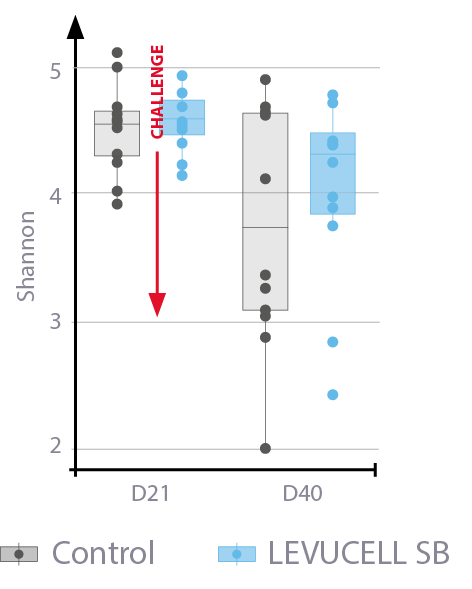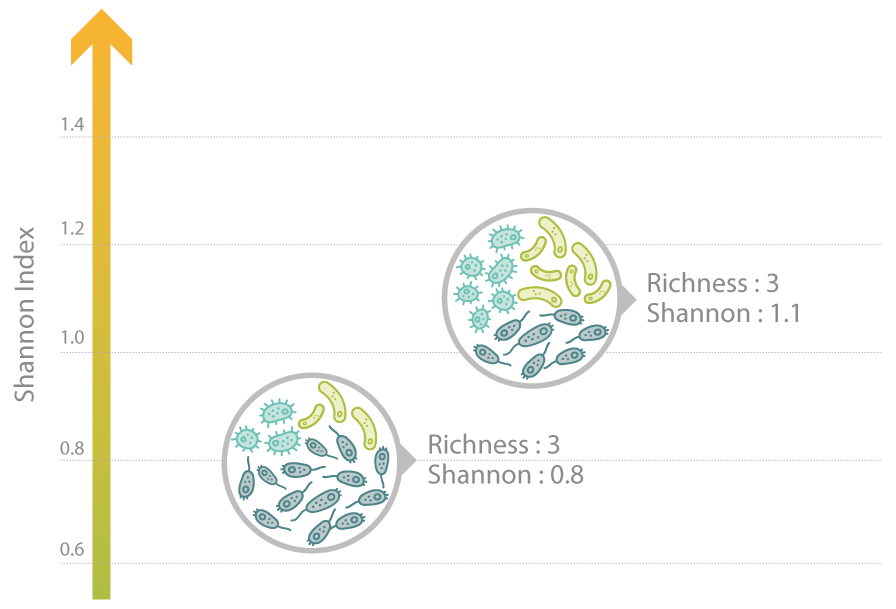Blog | Reading Time 3 minutes
Live yeast positively influences the broiler microbiome
If the efficacy of live yeast Saccharomyces cerevisiae boulardii CNCM I-1079 (LEVUCELL SB) to enhance the performance and digestive microbiota balance of poultry is recognized, modern genome sequencing-based microbial analysis help understand some of the microbial modulation mechanisms involved (Massacci, et al. 2019). This new study confirms that S. boulardii supplementation can positively modulate the poultry intestinal ecosystem under challenging conditions.
Bacterial challenging conditions
A trial was set up in order to evaluate the effects of the probiotic yeast on the intestinal ecosystem and the zootechnical performance during a Campylobacter jejuni infection. It was conducted by the Istituto Zooprofilattico Sperimentale dell’Umbria e delle Marche “Togo Rosati”, ITALY for 40 days.
- Ross male broilers received either a control or cer. boulardii CNCM I-1079 (LEVUCELL SB),
- On day 21, all the birds received a Campylobacter jejuni oral challenge (1×106 CFU/bird).
- The fecal and cecal microbiota composition was analyzed using the 16S rRNA amplicon sequencing technique1.
A resilient microbiota
The microbiota analysis indicates that:
- Under challenging conditions ( jejuni), the microbiota alpha-diversity2 is reduced: fewer different taxa (strains, genus, etc.) were identified, some species have become predominant.
- With the live yeast supplement, the microbiota shows a better resilience to the challenge. On day 40, the live yeast samples count a higher number of different species with less predominance of certain species (Figure 1).
A balanced microbiota
The 16S rRNA analysis confirms the higher abundance of beneficial bacteria species in the live yeast group, such as Lactobacillus spp. More interestingly it allows showcasing a higher presence of Faecalibacterium prausnitzii, a bacteria considered as a biomarker of gut health in humans and animals (see expert view).
EXPERT VIEW
Livia MOSCATI, IZS Istituto Zooprofilattico Sperimentale
Faecalibacterium prausnitzii, a gut health biomarker
“F. prausnitzii plays an important role in gastrointestinal homeostasis, resulting in the reduction of enteric pathological status, becoming a gut health biomarker. F. prausnitzii decrease in the gut microbiota is correlated with enteric disorders in both humans and animals. On the other hand, a study showed a higher proportion of the genus Faecalibacterium in broilers with better feed conversion rates (FCR) in comparison with those showing a low FCR; these data are in accordance with what we found in our study.”
At the same time, a lower Campylobacter spp. relative abundance was found in the LEVUCELL SB fecal samples compared to the control ones (p<0.01), suggesting that the live yeast could limit the Campylobacter excretion in the farm environment.
- To describe the microbial composition of gut microbiota using sequencing strategy it is not necessary to sequence the full metagenome. A common practice is to target a fragment of the bacterial genome, which is used as a marker or a sort of ID card of a bacteria. This approach, called amplicon sequencing or barcoding, which drastically reduces the cost and the time of analysis. The 16S ribosomal RNA subunit gene (16S rRNA gene) is the most used marker gene to describe bacteria composition.
- Alpha-diversity represents the diversity within one microbiota sample. Shannon index is one of the most used criteria to describe alpha-diversity. It considers both the total number of different taxa found in the sample, called the richness and the abundance or predominance of some taxa among the sample. The highest the Shannon Index, the more diverse and rich the microbiota.
Published Jun 28, 2021 | Updated May 30, 2023
Related articles
Need specific information?
Talk to an expert
